Double Height DDR4: 32GB Modules from G.Skill and ZADAK Reviewed
by Ian Cutress & Gavin Bonshor on January 23, 2019 9:00 AM ESTGaming Performance
Civilization 6 (DX12)
Originally penned by Sid Meier and his team, the Civ series of turn-based strategy games are a cult classic, and many an excuse for an all-nighter trying to get Gandhi to declare war on you due to an integer overflow. Truth be told I never actually played the first version, but every edition from the second to the sixth, including the fourth as voiced by the late Leonard Nimoy, it a game that is easy to pick up, but hard to master.
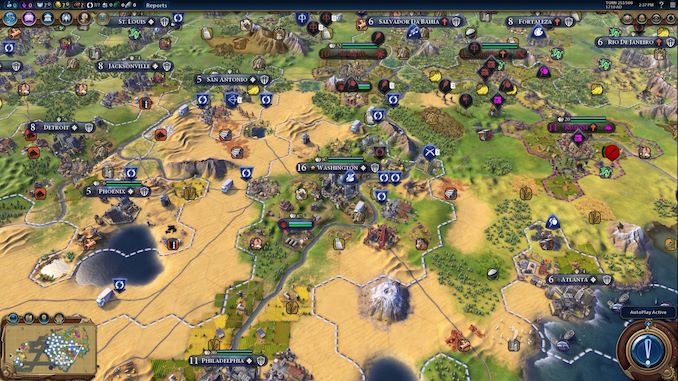
Benchmarking Civilization has always been somewhat of an oxymoron – for a turn based strategy game, the frame rate is not necessarily the important thing here and even in the right mood, something as low as 5 frames per second can be enough. With Civilization 6 however, Firaxis went hardcore on visual fidelity, trying to pull you into the game. As a result, Civilization can taxing on graphics and CPUs as we crank up the details, especially in DirectX 12.
Perhaps a more poignant benchmark would be during the late game, when in the older versions of Civilization it could take 20 minutes to cycle around the AI players before the human regained control. The new version of Civilization has an integrated ‘AI Benchmark’, although it is not currently part of our benchmark portfolio yet, due to technical reasons which we are trying to solve. Instead, we run the graphics test, which provides an example of a mid-game setup at our settings.
1080p Ultra
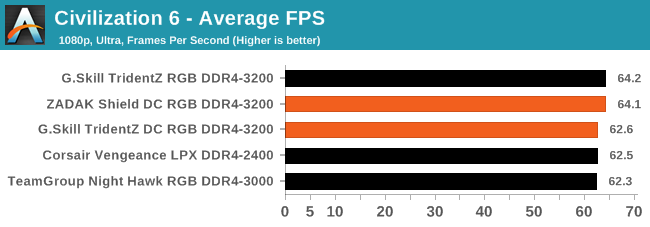

4K Ultra
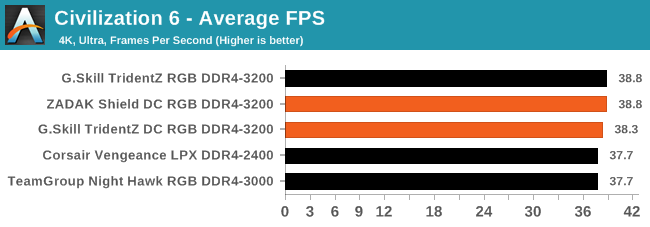
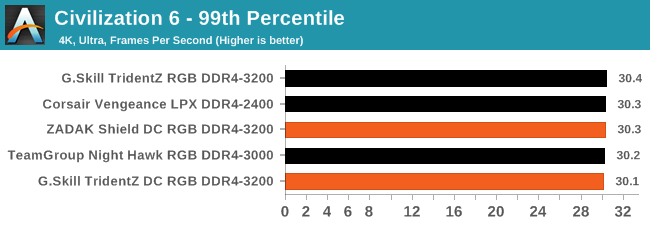
World of Tanks enCore
Albeit different to most of the other commonly played MMO or massively multiplayer online games, World of Tanks is set in the mid-20th century and allows players to take control of a range of military based armored vehicles. World of Tanks (WoT) is developed and published by Wargaming who are based in Belarus, with the game’s soundtrack being primarily composed by Belarusian composer Sergey Khmelevsky. The game offers multiple entry points including a free-to-play element as well as allowing players to pay a fee to open up more features. One of the most interesting things about this tank based MMO is that it achieved eSports status when it debuted at the World Cyber Games back in 2012.

World of Tanks enCore is a demo application for a new and unreleased graphics engine penned by the Wargaming development team. Over time the new core engine will implemented into the full game upgrading the games visuals with key elements such as improved water, flora, shadows, lighting as well as other objects such as buildings. The World of Tanks enCore demo app not only offers up insight into the impending game engine changes, but allows users to check system performance to see if the new engine run optimally on their system.
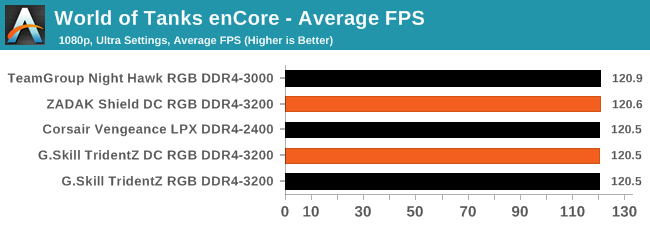

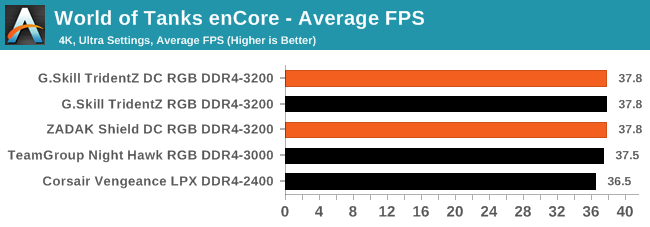
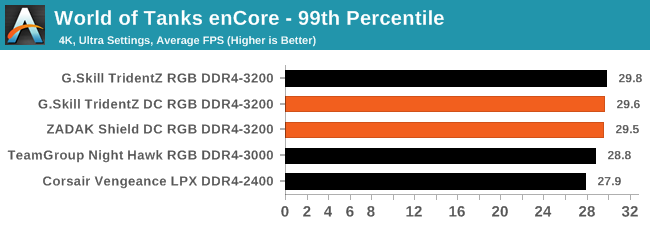
Strange Brigade
Strange Brigade is based in 1903’s Egypt and follows a story which is very similar to that of the Mummy film franchise. This particular third-person shooter is developed by Rebellion Developments which is more widely known for games such as the Sniper Elite and Alien vs Predator series. The game follows the hunt for Seteki the Witch Queen who has arose once again and the only ‘troop’ who can ultimately stop her. Gameplay is cooperative centric with a wide variety of different levels and many puzzles which need solving by the British colonial Secret Service agents sent to put an end to her reign of barbaric and brutality.
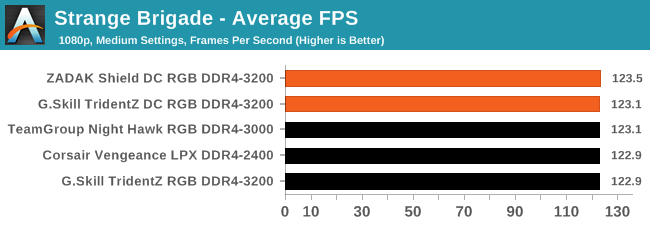

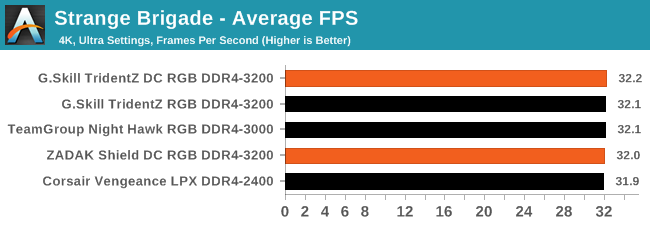
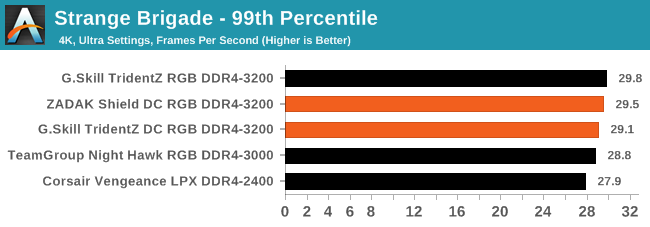


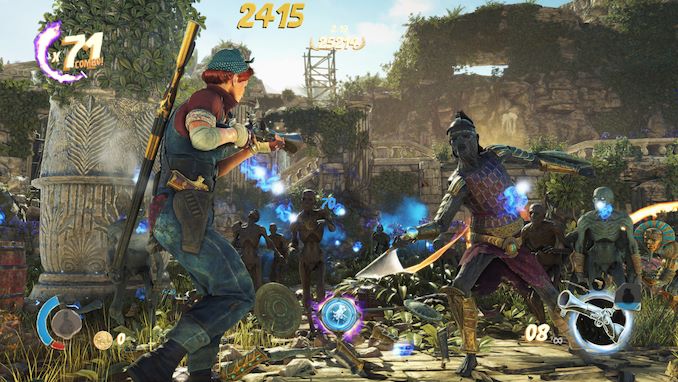








50 Comments
View All Comments
CheapSushi - Wednesday, January 23, 2019 - link
I honestly really love it aesthetically. It makes the rest of the motherboard balance out Z-height wise with PCIe cards. I know nobody else cares but there's something about it that I like. It's also an interesting solution; reminds me of early OCZ PCIe SSDs with dozens of chips on them. I would honestly love if these worked on quad and deca DIMM slot boards.SmCaudata - Wednesday, January 23, 2019 - link
I was pressed for time upon initial scanning and jumped to conclusion. Then I dug a bit deeper. In the conclusion you state that the G.Skill is substantially larger while the other only has a marginal height difference. This makes the ZADAK sound smaller, when in fact, the G. Skill double is actually the same size as the ZADAK single.G.Skill 45 mm height up to 60 for the double
ZADAK 60 mm height up to 73 for the double
Anyway. Based on percentage of size increases, yes, the G.Skill grew more, but you may want to consider some clarity in your description as there are a lot of people that just read the conclusion and may be concerned about size.
DanNeely - Wednesday, January 23, 2019 - link
I was confused too, because the ZADAK dimms looked significantly larger than the G.Skill.DigitalFreak - Wednesday, January 23, 2019 - link
This proprietary solution is pretty much DOA now that true 32GB DIMMs are supported by Intel on Z390 systems. All it needs is a BIOS update.nevcairiel - Wednesday, January 23, 2019 - link
Clearly the base technology would also scale up to using 16Gb dies for 64GB in one DIMM. The argument for small systems with only two slots still exists.The_Assimilator - Wednesday, January 23, 2019 - link
The number of people who want/need 64GB on a 2-DIMM-slot motherboard can be counted in the thousands, maybe. The number of people who want/need 128GB on a 2-slot motherboard can be counted on your fingers. This is a product without a market.yuhong - Wednesday, January 23, 2019 - link
The DDR4 spec only goes up to 16Gbit though.rocky12345 - Wednesday, January 23, 2019 - link
Great write up thank you.It also makes me see how much I need to upgrade my own system because I am still on DDR3@2200MHz with tight timings though but still I am sure this is holding me back a lot. My Aidia 64 latency score is like 42ns-43ns and I also thought that was fairly good and would help me get better responsiveness in my games and maybe it does. Like I said though my 2200MHz is probably really on the slow side when you think of DDR4@3200MHz and higher being able to push the systems so much harder.
Targon - Wednesday, January 23, 2019 - link
Why not test these on an AMD Ryzen based motherboard or two and see if they will work? Just because things are only officially supported on one platform or another doesn't always mean that they won't work. Also, Intel vs. AMD is very different in terms of memory support, and while it is more difficult to get DDR4 3633 and above working on the AM4 platform, if it works, it works. 3200 isn't a difficult speed at this point.Targon - Wednesday, January 23, 2019 - link
I disagree with the final paragraph where the focus is for SFF and motherboards with only two memory slots. If you have four memory slots and you can install 32GB in each slot, 128GB of RAM might be important for some people. What if you have a motherboard with more slots, if you really want/need the RAM and this stuff works, it doubles the allowed amount of RAM on the motherboard.The official specs for what a MOTHERBOARD supports are often limitations of the technology of the time. How many old machines said "Max 4GB RAM", because there were two slots, and at the time, you never saw 4GB memory modules. I've gone back to some of those old machines, and used 4GB modules to give 8GB of RAM in a machine that theoretically could only take 4GB.